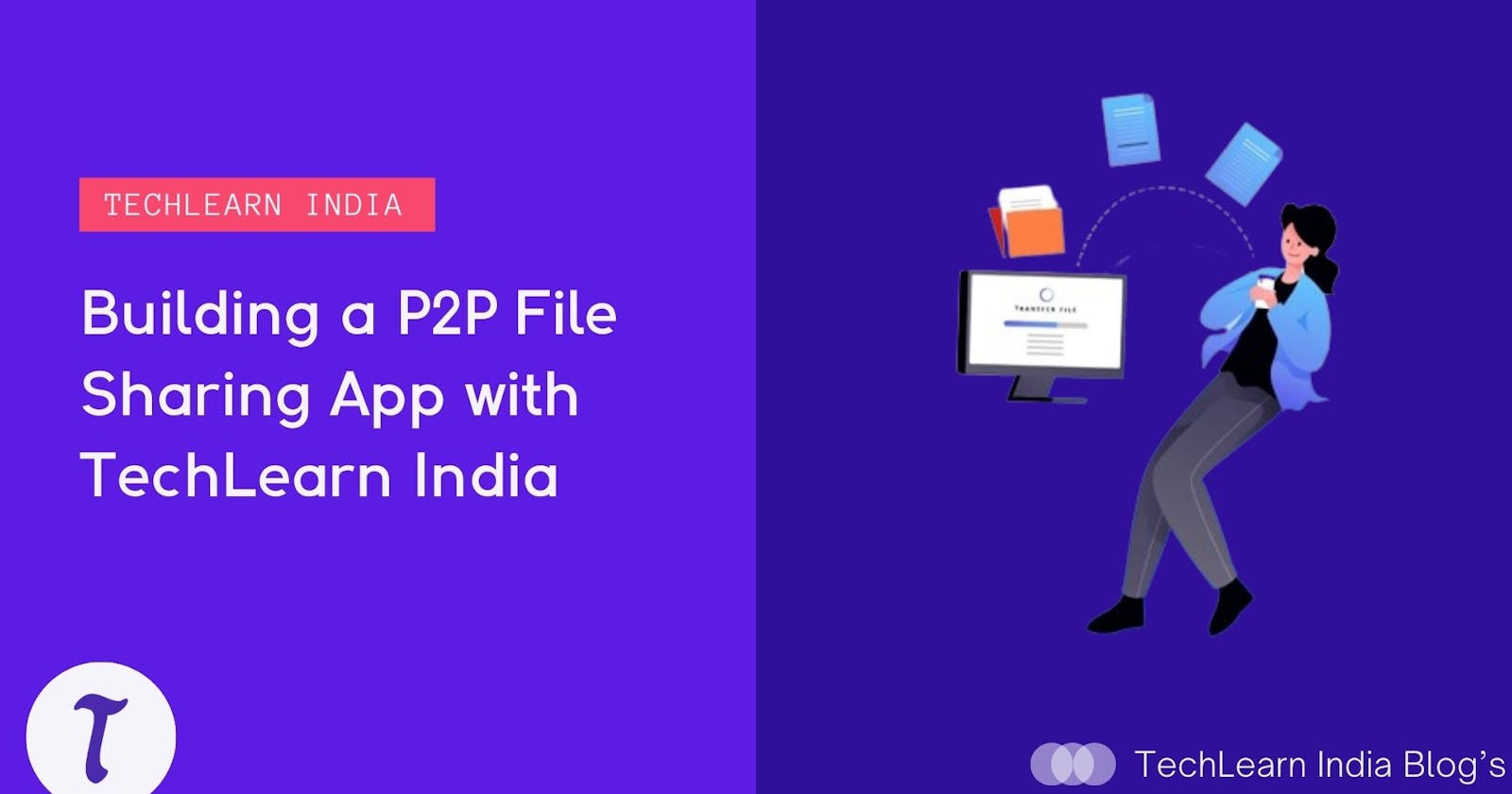Unleash Your Coding Skills: Building a P2P File Sharing App with TechLearn India
Introduction:
Welcome to an exciting coding journey brought to you by TechLearn India! In this hands-on tutorial, we'll guide you through the process of building a robust Peer-to-Peer (P2P) file-sharing app. Perfect for developers who have a basic understanding of networking, this project is designed to elevate your skills and explore advanced concepts like network protocols, media encoding, and storage architectures.
Prerequisites:
To embark on this enriching adventure, ensure you have the following tools at your disposal:
Node.js and npm
Fundamental knowledge of JavaScript and Node.js
A preferred code editor (e.g., VSCode)
Step 1: Set Up Your Node.js Project
Create a new Node.js project to lay the foundation for your P2P file-sharing app:
mkdir p2p-file-sharing
cd p2p-file-sharing
npm init -y
Step 2: Install Essential Dependencies
Install key packages, such as Express for handling HTTP requests and Socket.io for seamless real-time communication:
npm install express socket.io
Step 3: Craft Your Server
Establish a sturdy Express server with Socket.io to facilitate real-time communication. Create a file named server.js:
// server.js
const express = require('express');
const http = require('http');
const socketIO = require('socket.io');
const fs = require('fs');
const app = express();
const server = http.createServer(app);
const io = socketIO(server);
const PORT = process.env.PORT || 3000;
app.use(express.static('public'));
io.on('connection', (socket) => {
console.log('A user connected');
socket.on('disconnect', () => {
console.log('User disconnected');
});
// File sharing logic goes here
});
server.listen(PORT, () => {
console.log(`Server is running on http://localhost:${PORT}`);
});
Step 4: Craft Your Client
Create a basic HTML file for the client-side. Inside a folder named public, create an index.html file:
<!-- public/index.html -->
<!DOCTYPE html>
<html lang="en">
<head>
<meta charset="UTF-8">
<meta name="viewport" content="width=device-width, initial-scale=1.0">
<title>P2P File Sharing</title>
</head>
<body>
<!-- Customize your UI elements here -->
<script src="/socket.io/socket.io.js"></script>
<script src="client.js"></script>
</body>
</html>
Step 5: Implement P2P File Sharing Logic
Within server.js, infuse logic to manage file sharing:
// Incorporate this inside the io.on('connection') callback in server.js
socket.on('file-upload', (data) => {
const { fileName, fileData } = data;
fs.writeFile(`uploads/${fileName}`, fileData, 'base64', (err) => {
if (err) throw err;
console.log(`File ${fileName} uploaded successfully`);
});
});
socket.on('file-request', (fileName) => {
fs.readFile(`uploads/${fileName}`, 'base64', (err, fileData) => {
if (err) {
console.error(`Error reading file ${fileName}: ${err.message}`);
return;
}
socket.emit('file-response', { fileName, fileData });
});
});
Step 6: Implement Client-Side Logic
Create a client.js file inside the public folder:
// public/client.js
const socket = io();
// Customize your file-sharing UI and logic here
// Example: Upload a file
const fileInput = document.getElementById('file-input');
fileInput.addEventListener('change', (event) => {
const file = event.target.files[0];
const reader = new FileReader();
reader.onload = (readerEvent) => {
const fileData = readerEvent.target.result.split(',')[1];
socket.emit('file-upload', { fileName: file.name, fileData });
};
reader.readAsDataURL(file);
});
// Example: Request a file
socket.emit('file-request', 'example.txt');
socket.on('file-response', (data) => {
console.log(`Received file: ${data.fileName}`);
// Customize how you want to handle the received file data
});
Step 7: Run Your Application
Initiate your server by executing:
node server.js
Visit http://localhost:3000 in your browser and explore the console to witness the magic.
Conclusion:
Voila! You've just created a powerful P2P file-sharing app with TechLearn India. This hands-on project lays the groundwork for even more advanced features, including encryption, decentralized storage, and enhanced user interfaces.
Unlock your coding potential, and consider exploring additional features to make your P2P file-sharing app even more robust and secure. This engaging learning experience is a glimpse into the transformative courses we offer at TechLearn India. Ready to take your skills to the next level? Check out our courses and supercharge your coding journey! 🚀📂 Explore TechLearn India Courses
Happy coding! 🌟👩💻👨💻
